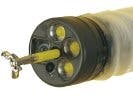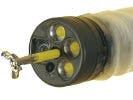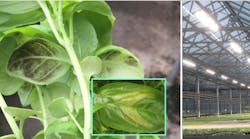Ultraviolet refers to all electromagnetic radiation with wavelengths in 10 to 400 nm range. The UVA range covers 315 to 400 nm. Wavelengths from about 345 to 400 nm are used for "Blacklight" effects, for example autofluorescence of fungal spores, lice or non-biological materials mainly in the region around 365nm. UVA radiation is used for various kind of phototherapy (treatment of acne, psoriasis, eczema etc) or for photo-chemotherapy (blood radiation) and for effects that have a positive influence on the cardiovascular system including vitamine-D photosynthesis.
UVB radiation at 280 to 315 nm does not penetrate as deeply into the skin as UVA, and is largely responsible for sunburn. UVC refers to shorter UV wavelengths, usually 200 to 280 nm, and these are especially damaging to exposed cells. Such short-wave UV is often used for germ killing purposes.






